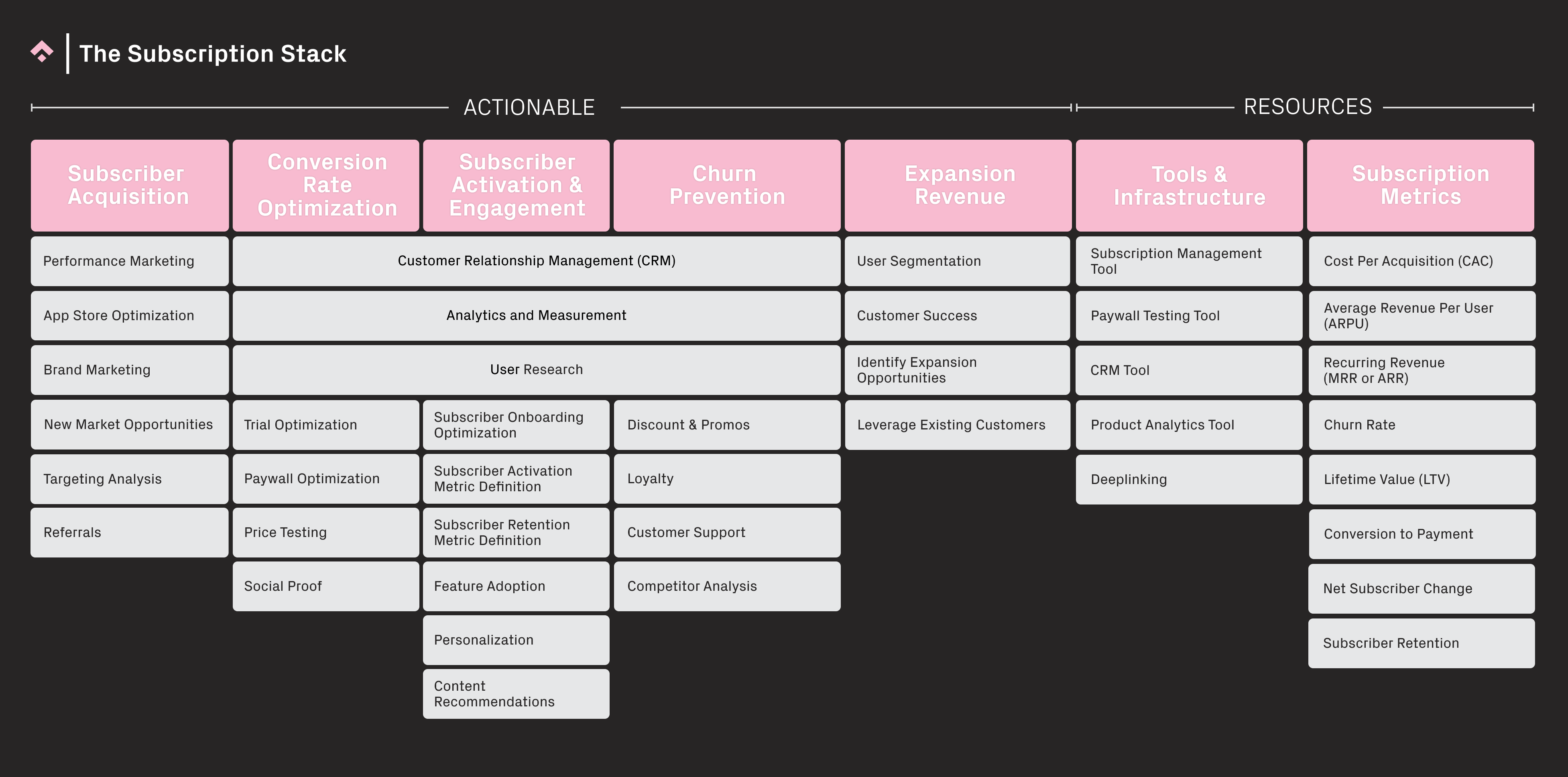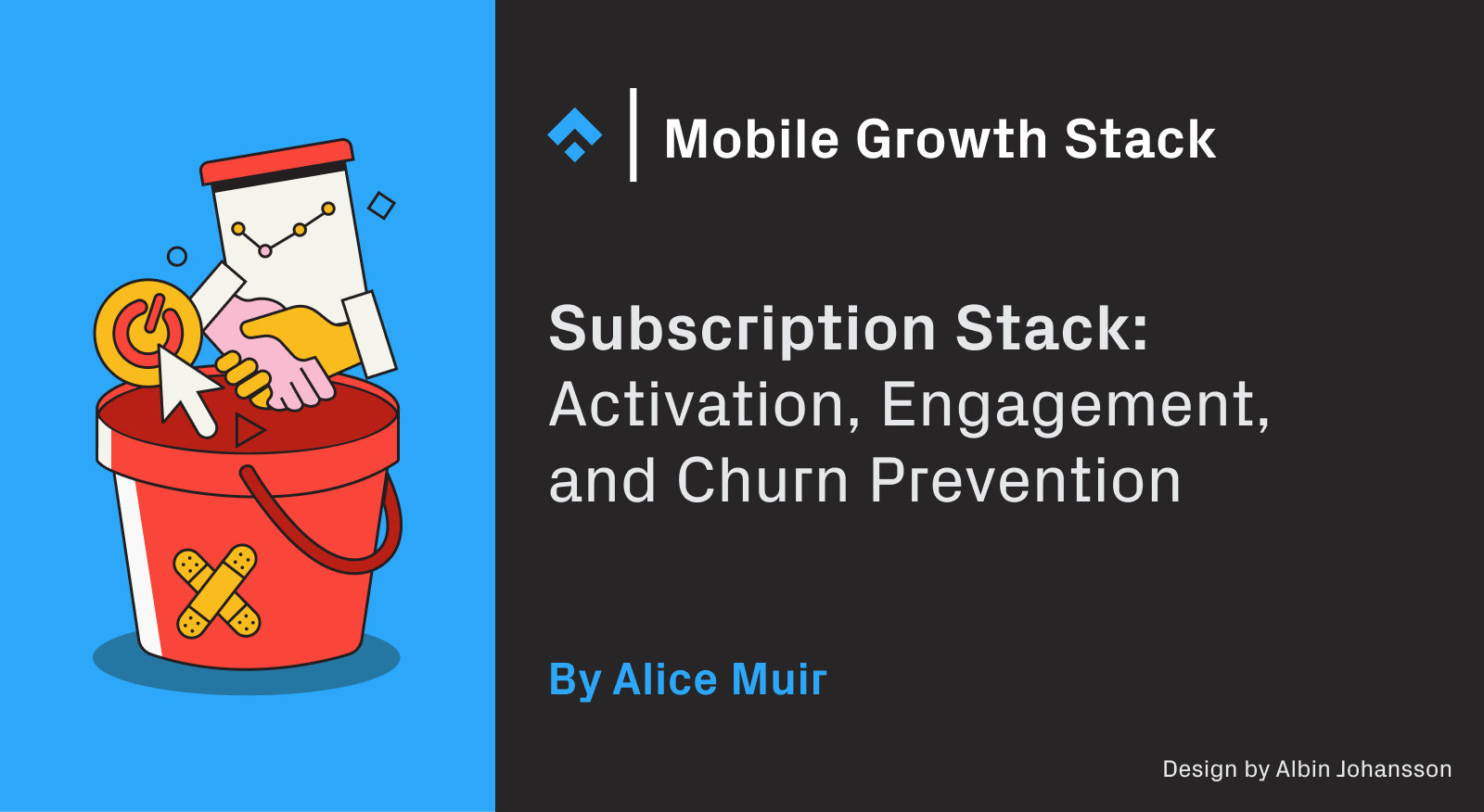
Each blog post in our Subscription Stack series introduces a key layer of the Subscription Stack, and deep dives into the importance of that layer to your own subscription optimization strategy for your app or game. Here we introduce activation, engagement, and churn prevention strategies for subscription apps. We touched on these topics already in the last article in the series, Conversion Rate Optimization, but here we go into more depth.
You can read our Introduction to the Stack here.
Part 1: Subscriber Acquisition
Part 2: Conversion Rate Optimization (CRO)
Part 3: Activation, Engagement, and Churn Prevention
Part 4: Tools and Infrastructure
Activation, engagement, and churn prevention strategies are some of the most fulfilling aspects of subscription optimization. Across these two layers of the Subscription Stack, you can bring your creativity to bear, connecting with your newly-acquired users as you show them the problem your app is solving, and inspiring them to become loyal subscribers. Winning back churning users is also a fundamental pillar of subscription optimization, and increasingly important as consumers tighten their belt.
Between them, these two crucial layers share Customer Relationship Management, Analytics and Measurement, and User Research, while numerous other aspects of these layers combine to ensure seamless activation, engagement, and churn prevention. These initiatives range from personalization to content recommendations, to customer support.
Of course, you’re unlikely to be able to do everything all at once. Your priorities will ultimately stem from the current stage of your own app and marketing efforts. That said, in this article we argue the foundation for success rests upon clearly defined activation and retention metrics, while a successful onboarding is invaluable for long-term retention (and success). We also outline how to execute great personalization, and how to spot disengaging users in order to pre-empt churn.
Define your activation and retention metrics
Sounds simple, but all too often neglected, defining your activation and retention metrics will give a strong foundation to all your activities here. The activation metric – otherwise known as the setup metric – is the relative take up of an action that will enable users to later experience the core value proposition of the app. The core retention metric is the relative take up of a habit-forming action that will help users fully understand and create a habit around the product’s core value proposition.
This is of course going to vary by each app’s core value proposition. For example, the percentage of users uploading images to a creative editing app is the activation (or setup) metric, but the percentage of users completing and exporting an edit would be the retention metric.
We recommend that apps clearly define the set up and habit forming moments for free users, but also repeat this exercise for premium users. This will only aid ‘stickiness’ and give insights into your retention efforts. Continuing with our creative editing app example, if the main value proposition of your premium experience unlocks the ability to edit videos on top of images, then the activation metric could be to upload a video, and the retention metric could be to save or export the edited video.

How to successfully onboard premium users
Now we have our metrics in place, it’s time to talk about subscriber onboarding – a crucial aspect of activation and engagement. It’s painful how many companies spend a huge amount of effort converting free users to a premium plan, then ignore these newly-converted users for the entirety of their subscription and wonder why their churn rates are high.
Just like free users, premium users need to be onboarded to the premium or subscription experience and shown how to make the most of their premium access. In failing to do so, you’re essentially hoping these users will stumble upon the premium features you want them to use and stick with – an unlikely scenario.
The goal of your premium user onboarding journey should align with the premium activation or ‘setup metric,’ as described in the previous section. Continuing with our creative editing app example, the goal of the premium onboarding journey is to encourage users to upload their first video and start sampling some of the premium editing tools on their uploaded video. It helps to set a timeframe that you want users to have done this by (e.g. within the first three days), since it’s very common for the majority of new users to churn if they don’t experience the value proposition in due time.
So how do you create an effective, guided onboarding journey for premium users? These tips should be seen as a guide to steer your efforts. Remember, many of these tips can be applied to the free user onboarding too.
- Use CRM to guide users
A mixture of push, emails, and in-app messages can help guide your users to the right places in the premium experience, especially driving users to premium features they may not have access to before converting to premium
2. Educate users about core premium features
Make sure you educate users on your core premium features and also include a prompt to activate users to get started. For example, an in-app message which encourages users to try their first advanced meditation
3. Use surveys to collect personalized data and understand use cases
Consider including a use case survey to understand the different premium use cases and segment accordingly. Follow up and activate each user on the feature they’re most interested in.
4. Use checklists and motivational theory
Use checklists to expose users to new, premium features and ensure they get a chance to try each one.
 .
. 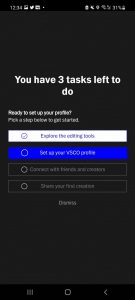 .
.
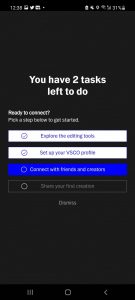
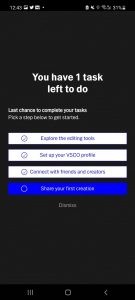
VSCO’s premium user onboarding flow using checklists.
What makes for great personalization?
Part and parcel of the onboarding process, and all of activation, engagement, and churn prevention for that matter, is personalization. This is arguably one of the most important aspects of keeping users engaged with your product and ensuring users continue to get value from it, according to their needs. This is particularly important in today’s economic climate when competition is fierce and consumers are actively thinking about which subscriptions to cut back on.
If you’re marketing a utility app, encourage users to opt-in to reminders that will encourage them to use the product, specific to their own needs. If you’re marketing a content app, send personalized content recommendations based on user behavior and preferences, and ensure a steady stream of new content is readily available. This might take the form of:
- Asking the right questions and saving data in the CRM as custom attributes and personalizing the journey accordingly.
- Sending weekly usage reports via email, push or in-app message. Duolingo sends regular updates on streaks and progress.
- Enabling users to save information and create profiles. For example, on Planta, you can create a profile and store information about your specific plants, which can be carried over to new or additional devices.
- Loyalty and rewards programs
- Personalized algorithms that make recommendations based on your tastes. For example, music or streaming recommendations.
Lastly, once you’ve got a steady stream of paying subscribers, consider ways to segment highly engaged ;power users’ and offer them a higher-priced subscription tier with features they’re most likely to use. For example, if your product is a creative editing tool, you could consider offering a ‘pro’ subscription with more advanced editing features to daily users while converting infrequent users to a more basic plan.
How to spot disengaging users
So far, we’ve concentrated on how to activate and engage your newfound subscribers. At the same time, you need to be vigilant for disengaging subscribers. These are subscribers who are using your product less, and are at risk of churning.
The key difference between disengaged users and churned users is that disengaged users still have a need for your product, otherwise they would have churned and unsubscribed. The goal should therefore be habit reinforcement, but first you need to understand why users might be disengaging. A combination of market intelligence and user insights is needed.
There are a few reasons why someone may start to disengage with a product. For example, they may be bored with the content, or they may have even used the product so much that they experience burnout. They may have had a change of lifestyle or habits and the product no longer solves their problem, or a competitor may be winning their attention.
An example of achieving this, relates to a period-tracking app we worked with at Phiture. The Phiture Retention Team noticed that a segment of users were disengaging according to our expected monthly natural usage. So, we served an in-app message survey through Braze to understand whether or not use cases had changed.
It turned out that a proportion of this segment of users were pregnant, hence why they were no longer tracking their cycles on a monthly basis. Therefore, we needed to create a plan to reinforce the period-tracking habit once they had surpassed the nine-month mark. For example, sending comms that were similar to activation comms for new users. Whatever works for instilling the habit-forming moment for new users can be recycled for habit reinforcement, with some adapted creatives. The app also needed to offer some value to serve this particular use case, and keep them engaged during this 9-month period. This was done through informative content about women’s health and pregnancy.
At the same time as we ran the use case analysis, Apple had evolved its Apple Health app to include cycle tracking, which meant that a proportion of users were likely testing out this alternative to see if it solved their problem more efficiently. Our client needed to ensure that they continued to offer more value than Apple’s alternative, and a large part of that was continuing to invest in women’s health research and to share that knowledge with their user base and community.
Some other habit-reinforcement tactics include gamification streaks, which tap into the user’s psychology to make them feel a bit guilty if they don’t continue the streak for a day (Duolingo does this nicely). Sending reminders of techniques that users may have learned when they first started using the product (e.g. fitness or meditation techniques), for example, or perhaps a reminder of why they started using the product in the first place (e.g. to lose weight, learn a language or reduce anxiety).
Customer Support
Customer support is often overlooked as a lever for churn prevention. Support teams collect data on things that users are struggling with, and, depending on whether or not publishers use this data in the right way, it can be fed back to CRM and product teams to inform product roadmaps and customer experience improvements.
One thing that we’ve done for our clients at Phiture, is set up an NPS survey through in-app messages, which collects NPS scores that indicate overall user happiness. If a score falls between 0-6, we consider this user to be relatively dissatisfied with the experience. Often at this point, we would send the user ID to the customer support team, who, depending on the circumstances, would either follow-up to collect extra information on why they scored low on the NPS survey. Or, depending on the information received in the survey, the support team would reach out to help the user solve its issue. This can be a great lever in reducing churn and keeping users engaged with the product.
Discount & Promos, Loyalty
We covered loyalty in the latest article in the Subscription Stack Series. Discounts and promos are also brilliant tools that can be used to winback users who have already churned. For example, if you know, in the data, that a user has turned auto renew off, you can offer a 10% discount on their next subscription. It can be helpful to surface this messaging through in-app messages, after their original subscription has expired. Since a user cannot resubscribe until their current subscription has expired. When surfacing this messaging, it’s helpful to remind users of the benefits, tools and features that they miss out on when they are no longer subscribed. And, in some cases, you can remind users of how much use they got from the product during their subscription period. YouTube does this nicely.
Conclusion
The key to keeping users engaged and retained is quite simple; ensure the product remains a part of their lifestyle. You can do this by leveraging things like personalization, CRM channels that foster habit adoption, collecting feedback and data that can personalize the experience and continuing to evolve the value proposition based on the consumer perception and market evolution.
Put simply, if users don’t use the product then they are very unlikely to continue paying for it.
Before you go:
- Check out the following article in the Subscription Stack Series, which covers tools and infrastructure.
- For a full overview of the Subscription Stack, you can download a handy pdf guide here.
- You can learn more about NPS surveys, including how to set these up through In-App Messages, in our comprehensive NPS guide.
Table of Contents

